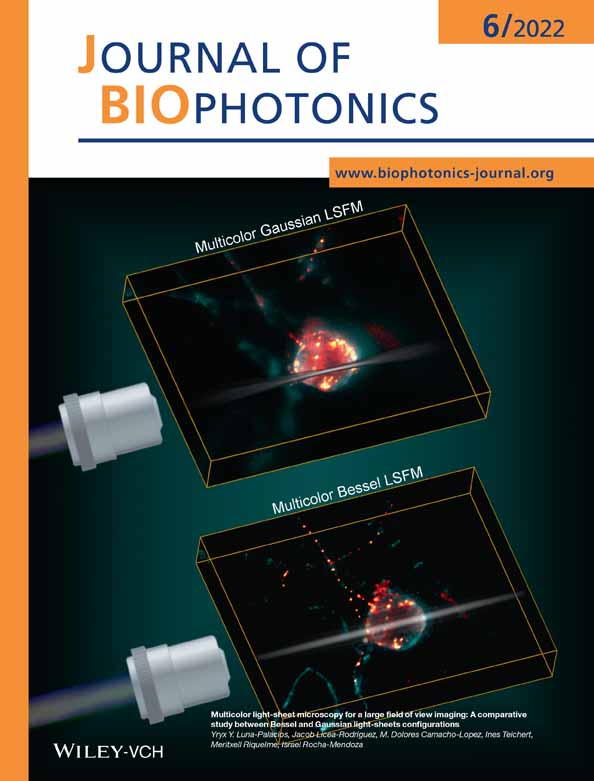Noninvasive examination of the cardiac properties of insect embryos enabled by optical coherence tomography
Funding information: Advanced Talents Incubation Program of the Hebei University, Grant/Award Number: 050001-521000981003; Foundation of Hebei Educational Committee, Grant/Award Numbers: QN2019117, QN2019035; Key R&D Project of Hebei Province, Grant/Award Numbers: 20542201D, 19212109D, F2021201013; National Natural Science Foundation of China, Grant/Award Number: 31702064; Natural Science Foundation of Hebei Province, Grant/Award Numbers: F2020201041, C2018201135; Natural Science Interdisciplinary Research Program of Hebei University, Grant/Award Number: DXK201910; Science and Technology Planning Project of Hebei Province, Grant/Award Number: 17214307D; The State Key Laboratory of Integrated Management of Pest Insects and Rodents, Grant/Award Number: ChineseIPM1709; Research Start-up Foundation of High-Level Talents Introduction, Grant/Award Number: 521000981006; Internal R&D funding of NuVision Photonics
Abstract
Understanding the cardiac properties of insect embryos at different development stages is important, however, few works have been conducted probably due to the lack of effective tools. Using locust embryos as an example, here we show, for the first time, that optical coherence tomography (OCT) is capable of obtaining detailed information of embryos' heart activities and irregularities, such as the heart rate, cardiac cycle, diastolic and systolic diameters, hemolymph pumping rate and ejection fraction at different stages of embryonic development and at different temperatures. We develop algorithms and mathematical methods for extracting and analyzing cardiac behavior information of locust embryos. We discover that locust embryos experienced suspended development (quiescence) caused by cold storage have a heart rate 20% more than that of embryos without experiencing quiescence and that the hemolymph pumping rate of the two types of embryos behaves differently as the embryos grow. In addition, using OCT as an accurate cardiac activity examination tool, we show that the heart rates of locust embryos are effectively reduced due to nitric oxide synthase gene silencing by RNA interference, indicating potential application of using locust embryos as a good model organism to study cardiovascular diseases, including the congenital heart disease and arrhythmia. Finally, the capabilities offered by OCT in the studies of locust embryonic development may also prove helpful to promote locust reproduction for nutritions or restrain locust reproduction for pest control.
Open Research
DATA AVAILABILITY STATEMENT
The data that support the findings of this study are available from the corresponding author upon reasonable request.




